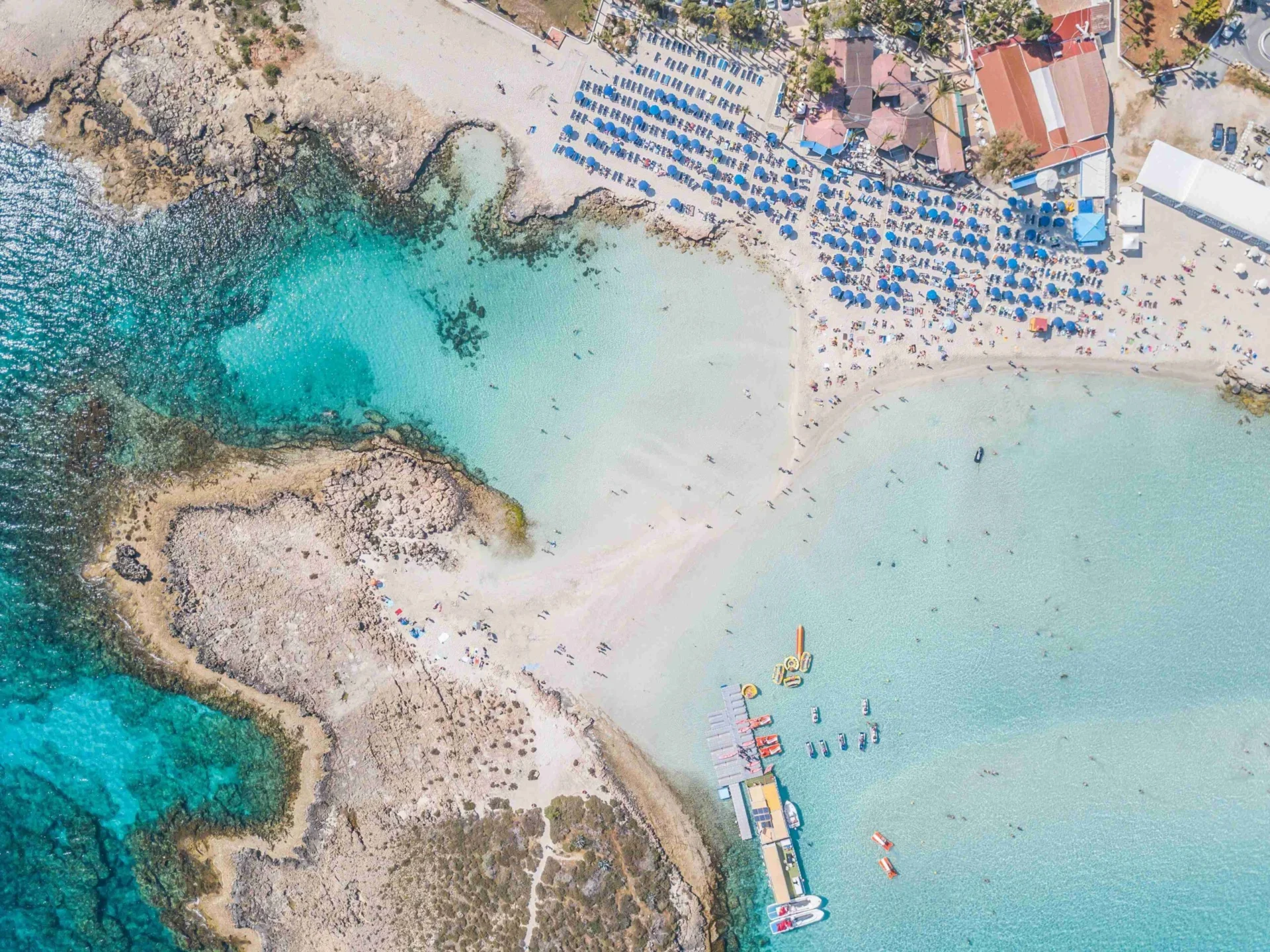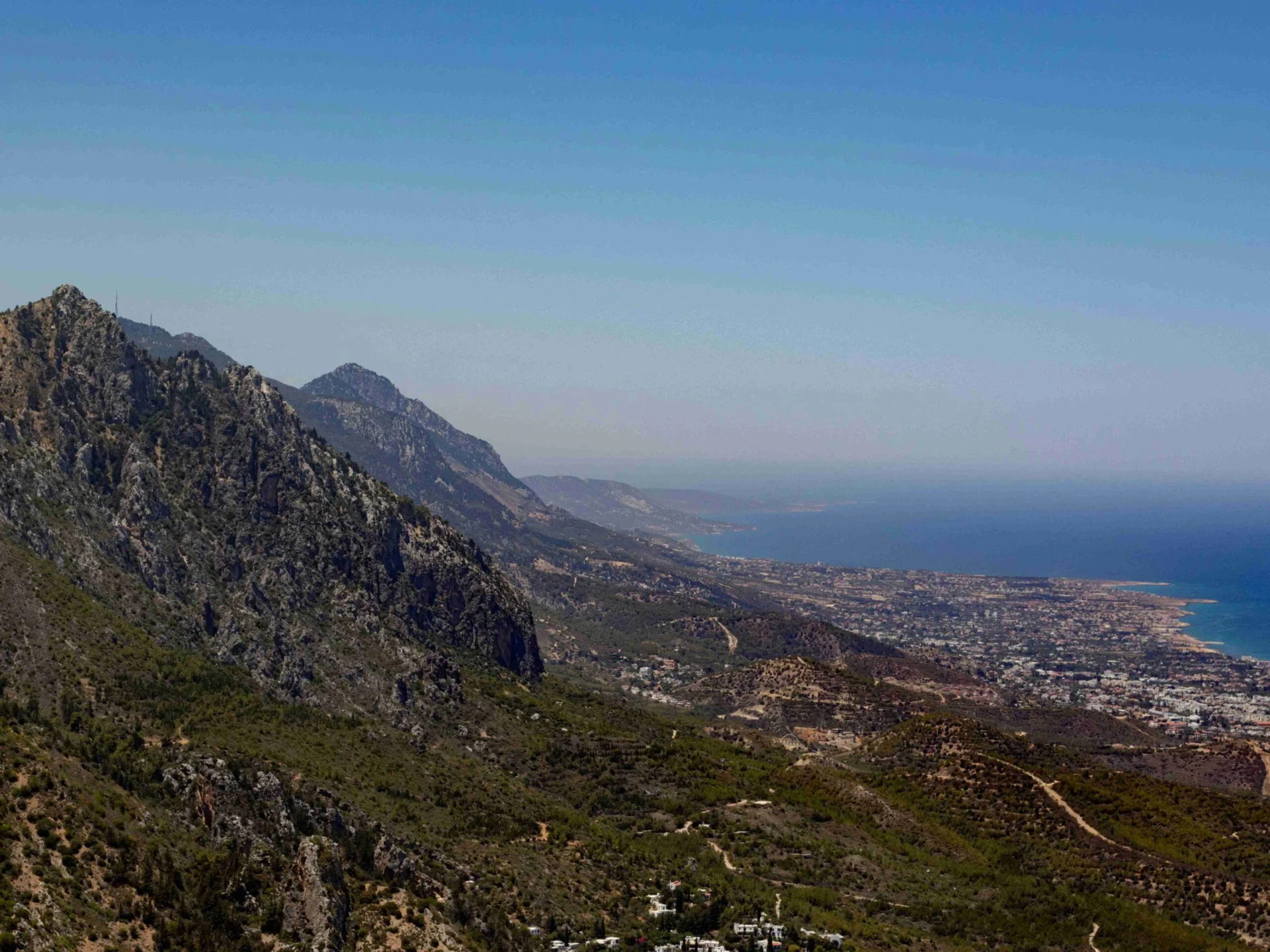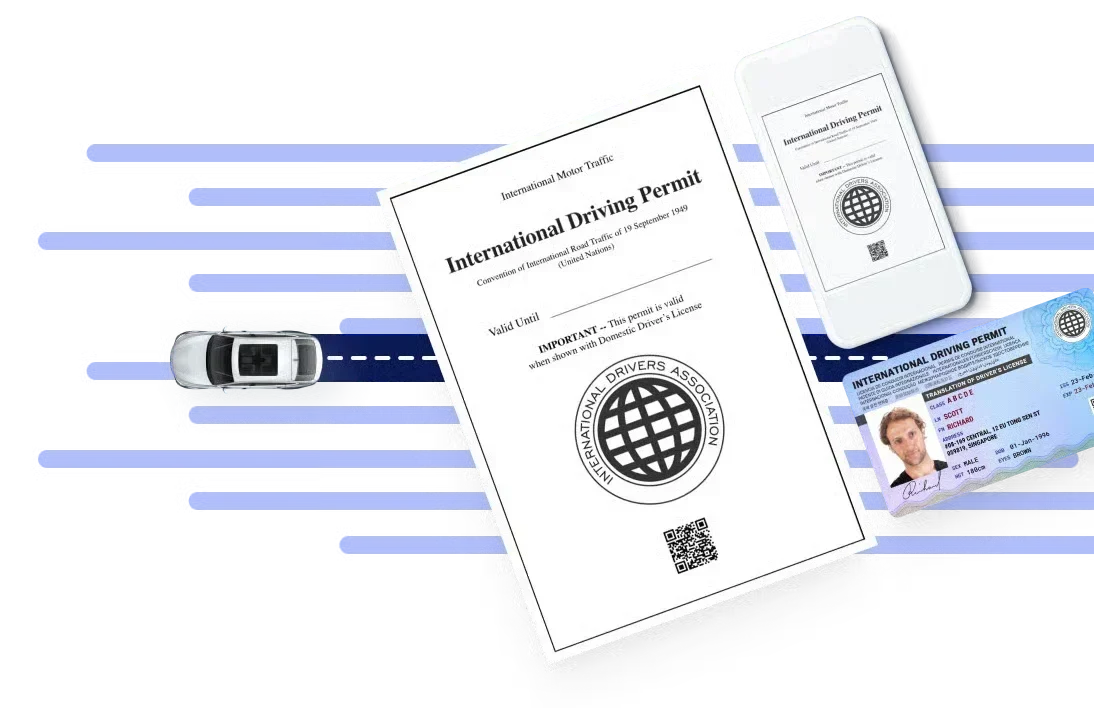Taking a road trip through Cyprus is an adventure that combines stunning coastal views, rugged mountain landscapes, and a rich tapestry of history and culture. This Mediterranean island offers diverse experiences, from ancient ruins to pristine beaches, all within a manageable driving distance. Here’s a comprehensive guide to help plan an unforgettable Cypriot road trip. You’ll also learn driving rules and regulations, so you won’t get into any trouble during your trip.
Check if you need an IDP NowWhere was your license issued?
Destination
Best Months to Go Driving In Cyprus
Before choosing which route you’ll take, let’s first learn the best times to visit Cyprus for a road trip, considering various factors affecting your experience.
Spring (April to May)
Spring is one of the most delightful seasons in Cyprus. Temperatures typically range from 15°C to 25°C (59°F to 77°F), making it comfortable for outdoor activities and sightseeing. The landscape bursts into bloom, with wildflowers carpeting the countryside, especially in the Troodos Mountains. This season is ideal for hiking and nature walks.
April might see occasional rain showers, but they’re usually brief. The weather will be more stable and warmer by May, which is perfect for early beach visits. The sea starts to warm up, though it might still feel chilly for prolonged swims.
Spring has fewer tourist crowds than summer, meaning less road traffic and more accommodation availability. This makes spring an excellent time for a relaxed road trip experience .
Autumn (September to October)
Autumn rivals spring as the best time for a Cyprus road trip. Temperatures remain warm, typically between 20°C to 28°C (68°F to 82°F), and the scorching heat of summer has subsided. The sea has been warm since summer, perfect for swimming and water activities.
September is delightful, with long, sunny days and comfortable temperatures. October might see occasional rain, but it’s generally dry and warm. The changing colors in the Troodos Mountains create beautiful scenery for drives and hikes.
Like spring, autumn sees fewer tourists, allowing for a more authentic experience of Cypriot culture and easier access to popular sites.
Summer (June to August)
Summer is the peak tourist season in Cyprus. Temperatures soar, often exceeding 30°C (86°F) and sometimes reaching 40°C (104°F) inland. Coastal areas benefit from sea breezes, making them more bearable.
This season is ideal for beach lovers and those who enjoy hot weather . The sea is warm and perfect for swimming. However, the intense heat can make sightseeing and hiking challenging, especially during midday.
Expect crowded beaches, busy roads (particularly on weekends), and higher accommodation prices. If planning a summer road trip, booking accommodations well in advance and starting early in the day is advisable to avoid the hottest hours.
Winter (November to March)
Winter in Cyprus is mild compared to much of Europe, with daytime temperatures around 15°C to 20°C (59°F to 68°F) on the coast. However, it can get quite cold in the Troodos Mountains, with temperatures dropping below freezing at higher altitudes. Snow is common in the mountains, attracting winter sports enthusiasts.
This season sees the most rainfall, particularly from December to February. While there are still plenty of sunny days, be prepared for wet weather, especially if driving in the mountains. So, bring your best travel gear during this season.
Winter offers the opportunity to experience a different side of Cyprus. It’s the least touristy season, providing a chance to mingle with locals and enjoy a quieter, more authentic atmosphere. Many coastal resorts close during this time, but cities remain lively.


Top Road Trip Routes to Choose From
Depending on the vibe you are going for, here are the best routes trips routes and itineraries to choose from:
Coastal Route: Sun, Sea, and Ancient Wonders
Distance: Approximately 250 km (155 miles)
Travel time: 3-4 hours
The coastal route begins in Paphos , a city steeped in mythological significance. From here, the journey unfolds along the southern coast, revealing Cyprus’s most iconic landmarks and beaches.
Leaving Paphos, the first stop is Aphrodite’s Rock, also known as Petra tou Romiou. According to legend, this is where the goddess of love emerged from the sea foam. The striking rock formation rising from the crystal-clear waters makes for a perfect photo opportunity.
Continuing eastward, the ancient city of Kourion awaits. This archaeological site boasts well-preserved Roman mosaics and a stunning Greco-Roman theater overlooking the Mediterranean. Time your visit for sunset to witness a truly magical spectacle.
Next on the route is Limassol, Cyprus’s second-largest city. The medieval castle in the old town center houses a fascinating museum, while the surrounding Limassol wine region offers opportunities for wine tasting and cellar tours.
As the journey progresses, Ayia Napa emerges as a vibrant coastal town famous for its beaches and nightlife. With its powdery white sand and shallow turquoise waters, Nissi Beach is a must-visit spot for beach lovers.
The coastal route concludes at Cape Greco National Park, a natural wonderland of sea caves, hidden coves, and dramatic cliff formations. It’s an ideal location for hiking, snorkeling, or simply admiring the breathtaking views.
A detour to the Akamas Peninsula is highly recommended for those with extra time. This untouched wilderness is home to loggerhead turtle nesting sites and offers excellent hiking trails with panoramic coastal vistas.
Mountain Route: Monasteries, Villages, and Nature’s Bounty
Distance: Approximately 150 km (93 miles)
Travel time: 2-3 hours
The mountain route starts in Nicosia, the world’s last divided capital city. From here, the road winds up into the Troodos Mountains, revealing a different side of Cyprus.
The first major stop is Kykkos Monastery , the island’s wealthiest and most famous monastery. Its ornate interiors and religious artifacts provide insight into Cyprus’s Orthodox Christian heritage.
Venturing deeper into the Troodos National Forest Park, travelers encounter a network of hiking trails leading to hidden waterfalls and fragrant pine forests. The park is a haven for nature lovers and offers respite from the coastal heat.
The journey continues through picturesque mountain villages like Omodos and Kalopanayiotis. These settlements showcase traditional Cypriot architecture and are known for their local wineries and handicrafts.
Mount Olympus is at the heart of the Troodos range, the highest peak in Cyprus. It transforms into a modest ski resort in winter, while in summer, it offers panoramic views of the surrounding landscape.
Along the way, Chrysoroyiatissa Monastery and the village of Lefkara are worth a visit. The former is known for its excellent locally-produced wine, while Lefkara is famous for its intricate lacework and silverware.

Cultural Route: Exploring Northern Cyprus
Distance: Approximately 200 km (124 miles)
Travel time: 3-4 hours
The cultural route focuses on North Cyprus, starting from Nicosia’s divided old town. Crossing the Green Line opens up a different perspective on Cypriot history and culture.
Bellapais Abbey, a 13th-century Gothic monastery, is the first major stop. Its well-preserved ruins offer stunning views over Kyrenia and the coast.
Nearby, St. Hilarion Castle perches dramatically on a mountain peak. This fairy-tale-like fortress is said to have inspired Walt Disney’s design for the castle in Snow White.
Check if you need an IDP NowWhere was your license issued?
Destination
The harbor town of Kyrenia, with its horseshoe-shaped old harbor and imposing Venetian castle, highlights North Cyprus. The castle houses a shipwreck museum featuring a 2,300-year-old Greek merchant vessel.
The Karpas Peninsula, often called the “panhandle” of Cyprus, is home to wild donkeys, unspoiled beaches, and the ruins of ancient Carpasia. It’s an off-the-beaten-path destination perfect for nature lovers.
For history enthusiasts, a stop at Salamis Ancient City is a must. This vast archaeological site features impressive Roman-era ruins, including a theater, gymnasium, and baths.
Circular Route: The Best of Both Worlds
Distance: Approximately 500 km (311 miles)
Travel time: 6-8 hours (excluding stops)
For those with more time, a circular route combining coastal and mountain experiences offers the most comprehensive exploration of Cyprus.
Starting in Paphos, this route follows the coastal road eastward, taking in the highlights mentioned in the coastal route. After reaching Cape Greco, it turns inland towards the Troodos Mountains, incorporating the key stops from the mountain route.
The journey continues to Nicosia, allowing time to explore both sides of the divided capital. From here, travelers can venture into North Cyprus, visiting Famagusta and its haunting “ghost town” of Varosha before completing the circle back to Paphos.
Additional stops on this comprehensive route might include Larnaca, known for its salt lake and the Hala Sultan Tekke mosque, and a revisit to Ayia Napa’s Nissi Beach for some relaxation.
Practical Considerations
When planning your Cyprus trip , here are a few important factors to consider:
Accommodation
Cyprus offers a wide range of accommodation options. Coastal areas have numerous resorts and hotels, while mountain villages often feature charming guesthouses. Booking in advance is advisable, especially during peak summer months.
Permits
Since you will be driving a lot on this road trip, you don’t want to get into any trouble with the authorities. That’s why you need an international driving permit before your flight so you’ll be able to drive without any worries. Thankfully, you can easily get an IDP online .
Food and Drink
Cypriot cuisine is a delightful mix of Greek and Middle Eastern influences. Must-try dishes include souvlaki, halloumi cheese, and kleftiko (slow-cooked lamb). Don’t miss the opportunity to try local wines and the traditional spirit of Zivania.
Safety
Cyprus is generally a safe country for driving. However, mountain roads can be narrow and winding, so extra caution is necessary. Always carry water, especially during hot summer months.
Road Rules for Driving A Car in Cyprus
When you drive in Cyprus, it’s crucial to familiarize yourself with the local rules of the road. Whether you’re planning to go for a car rental service or bring your own vehicle, understanding Cypriot driving laws will help ensure a safe and enjoyable trip. Here are some key things you should know before you get a car hire in this scenic island nation.
Left-Hand Drive and Basic Rules
Similar to the UK, you must drive on the left when getting around Cyprus. If you’re not used to driving on the left-hand side of the road, take extra care, especially when turning or using roundabouts. Remember, overtake on the right, and give way to traffic coming from the right at roundabouts.
Speed Limits in Cyprus
Speed limits in Cyprus can vary depending on the type of road:
- Motorways: 100 km/h (62 mph)
- Main roads outside built-up areas: 80 km/h (50 mph)
- Secondary roads: 65 km/h (40 mph)
- Built-up areas and urban areas: 50 km/h (31 mph)
Always watch for posted speed limit signs, as they may differ in certain areas. Some roads have minimum speed limits, typically on motorways.
Alcohol and Driving
Cyprus has strict drunk driving laws. The legal blood alcohol limit is 0.05%, lower than in many other countries. It’s best to avoid alcohol entirely if you plan to drive.
Seatbelts and Child Safety
Seatbelts are mandatory for all occupants, including those in the front passenger seat and rear seats. Children under 150cm in height must use appropriate child restraints.
Mobile Phone Use
Using a handheld mobile phone while driving is illegal in Cyprus. Use a hands-free system if you need to make calls while driving.
Other Driving Tips
- It’s illegal to use your horn in built-up areas unless it’s to prevent an accident.
- Headlights must be used at night and during times of poor visibility.
- At a stop sign, come to a complete stop before proceeding.
- Wait for the light to turn green at red lights before moving.
Driving Style and Advice
Cypriot drivers can be more aggressive compared to what you might be used to. Drive defensively and be prepared for others to tailgate or overtake in risky situations. Stay calm and focused, especially in major cities like Limassol or Nicosia where traffic can be hectic.
Cyprus Is Waiting For You!
A road trip through Cyprus offers an unparalleled opportunity to experience the island’s diverse landscapes, rich history, and warm hospitality. Whether following the coast, exploring the mountains, or combining both, travelers will create lasting memories of this Mediterranean gem. With careful planning and an adventurous spirit, a Cypriot road trip is an unforgettable journey through one of Europe’s most captivating islands.
Frequently Asked Questions
Are there any toll roads in Cyprus?Currently, there are no toll roads in Cyprus. All major highways and roads are free to use.
How’s the quality of roads in Cyprus?The main roads and highways in Cyprus are generally well-maintained. However, some rural and mountain roads can be narrow and winding. Drive cautiously, especially in less populated areas.
Is it easy to find parking in Cypriot cities?Parking can be challenging in city centers, especially during peak tourist season. Many hotels offer parking, but in busy areas like Nicosia or Limassol, you might need to use paid public parking lots.
Are there any driving restrictions I should be aware of?Cyprus has strict drunk driving laws, with a lower legal limit (0.05%) than many other countries. Always designate a sober driver if planning to drink.
How readily available are electric vehicle charging stations?While growing in number, EV charging stations are still limited in Cyprus. They’re more common in major cities and tourist areas. If renting an EV, plan your route carefully.
What should I do if I have a car breakdown in a remote area?It’s advisable to have a local SIM card or international roaming for emergencies. Most rental companies provide 24/7 roadside assistance numbers. In case of a breakdown, call your rental company or dial 112 for emergency services.
Are there any cultural sensitivities I should be aware of when visiting religious sites?When visiting monasteries or churches, dress modestly (cover shoulders and knees). Some sites may require women to wear skirts and men to wear long pants.
How widely is English spoken in Cyprus?English is widely spoken in tourist areas and cities. However, knowledge of Greek or Turkish might be helpful in rural areas. Carrying a translation app can be helpful.
Are there any restrictions on photography at historical sites?While photography is generally allowed at most sites, some religious buildings or specific archaeological areas may have restrictions. Always check for signs or ask staff before taking photos.






